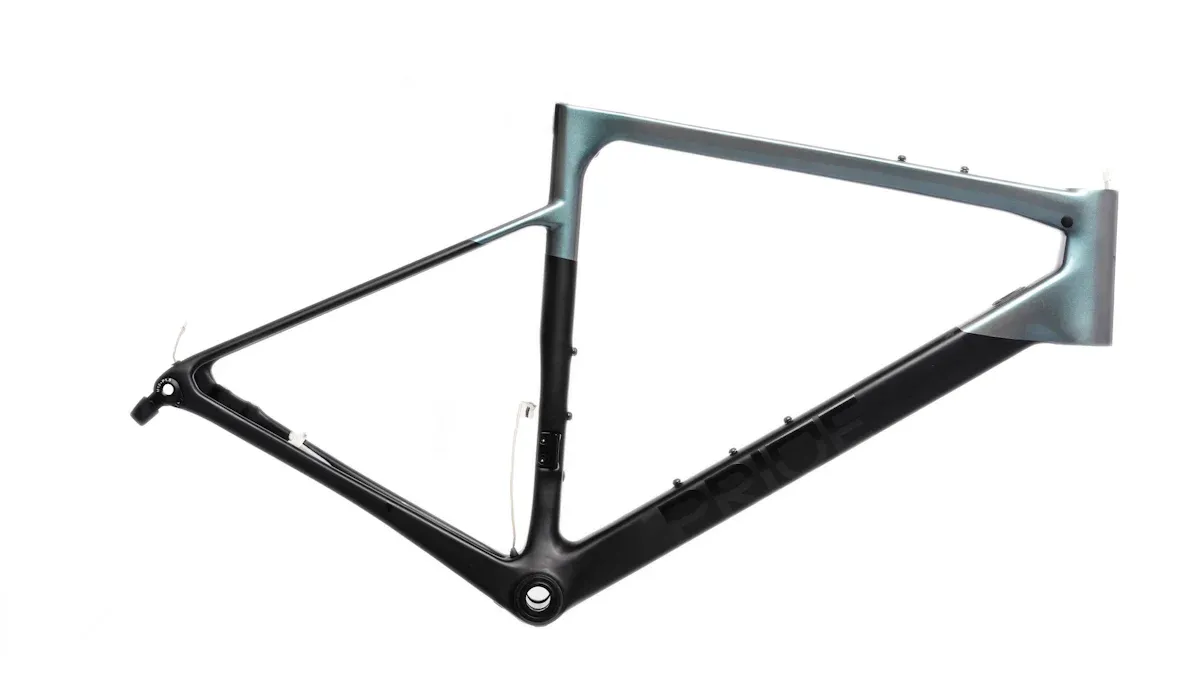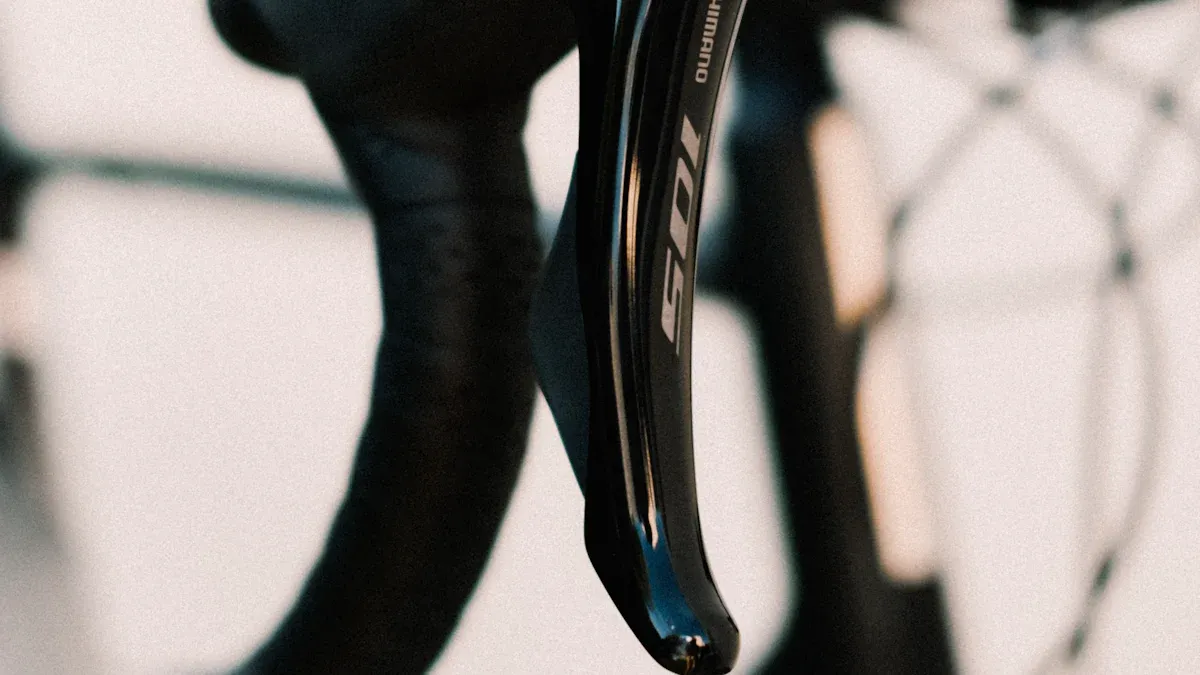
When you pick a bike, the frame material is very important, especially when considering the aluminum bike frame life. It affects how long the bike lasts, how strong it is, and how well it performs. Knowing the differences between materials like aluminum and carbon can help you choose better. For example, carbon frames can last more than five years if you take care of them. You should check for cracks and pay attention to how the bike feels. This helps keep the frame strong. Understanding these things helps you spend your money wisely on biking.
Key Takeaways
Aluminum bike frames usually last 5 to 10 years. Taking care of them can make them last longer.
Carbon bike frames can last a lifetime if you maintain them well. You should check for damage regularly.
Both types of frames need special care. Cleaning and checking for damage can stop expensive repairs.
Aluminum frames are usually cheaper at first, while carbon frames last longer and can be repaired.
Knowing the differences in how they perform and how to care for them can help you pick the right bike frame for you.
Lifespan Overview
Aluminum Frame Lifespan
Aluminum bike frames usually last 5 to 10 years. This time can change based on how you use and care for your bike. If you ride a lot and in tough conditions, your frame may wear out faster. But if you take good care of it, your aluminum frame can last longer.
Here are some important things that can affect how long aluminum frames last:
Fatigue: Aluminum can break from repeated stress, even if it’s below its strength limit.
Design and Manufacturing: Good design and making can help your frame last longer.
Environmental Conditions: Being in salty or humid places can speed up damage. Big temperature changes can also harm the material.
Usage Patterns: Heavier riders or those who ride often may see wear and tear sooner.
If you don’t take care of your aluminum bike frame, it can crack in just a few years. Regular checks and maintenance are very important to keep it lasting.
Carbon Frame Lifespan
Carbon fiber frames are often seen as weak, but they can last a long time if cared for well. Many makers say a well-kept carbon frame can last a lifetime. Here are some thoughts from experts:
Chuck Texiera, a senior engineer at Specialized, says they rarely see problems with carbon frames.
Benoit Grelier from Scott’s bicycle engineering thinks a carbon bike frame can last forever.
Scott Nielson, vice president at Enve, says if made right, carbon frames could last a lifetime.
But just like aluminum, many things can affect how long carbon frames last:
Maintenance: Regular care is key for a long life.
Storage Conditions: Good storage helps protect against damage.
Impact of Crashes: Even small accidents can cause hidden damage that you might not see right away.
Quality of Manufacturing: Better quality frames usually last longer.
Both aluminum and carbon frames can last about 10 years with good care. But things like UV rays and moisture can really affect how long they last.
Durability Comparison

When you think about how strong bike frames are, impact resistance and fatigue are very important. Aluminum and carbon frames have different strengths and weaknesses in these areas.
Impact Resistance
In lab tests, carbon bike frames often crack when hit. This cracking can cause serious problems, making them less safe in some crashes. On the other hand, aluminum frames usually dent instead of crack. This denting lets you keep using them after small damage. But if aluminum gets big damage, you often need to replace it.
Here are some common types of damage you might see during crashes:
Light carbon frames can break from low-speed falls, especially at joints.
Carbon fiber is weak against hits from sides, making it vulnerable.
Cracks near joints of aero or teardrop carbon parts are common after crashes.
Aluminum frames may get scratches and dents, while carbon frames could break under similar crashes.
Stress and Fatigue
Both aluminum and carbon frames have problems from repeated stress and fatigue over time. Aluminum frames get tiny cracks from bending a lot. These cracks can weaken them. Stress points often grow at weld joints, which are important areas where fatigue can cause failure. High-quality aluminum frames usually last 5 to 7 years with regular use, showing that stress affects how long they last.
Evidence | Explanation |
|---|---|
Tiny cracks form from bending a lot | This shows that aluminum frames can get damaged over time due to stress. |
Stress points grow at weld joints | Weld joints are key areas where fatigue can cause failure, showing their importance in durability. |
High-quality aluminum frames last 5-7 years with regular use | This lifespan shows that stress and fatigue greatly affect aluminum bike frames. |
Carbon frames also have fatigue problems, but they act differently. The resin in carbon frames can break down from UV light, causing tiny cracks from repeated stress. Over time, the frame may become less stiff and efficient, especially around the bottom bracket. Racing teams often change carbon frames to avoid slow damage that happens over time.
You should know that while carbon frames may get a bit less stiff, this change is often hard to notice. It takes many cycles for noticeable fatigue effects to show up.
Maintenance Needs
Aluminum Maintenance
To keep your aluminum bike frame in great shape, follow these important maintenance tips:
Clean the frame after rides. This removes dirt and grime that can cause rust.
Look for scratches and dents. Finding damage early can stop bigger problems later.
Make sure parts are tight. Loose parts can cause extra wear and tear.
To stop rust and fatigue, think about these practices:
Check for cracks regularly. Look closely at weld joints and stressed areas.
Use lubricant to cut down friction. Apply the right lubricants on moving parts.
Recoat to protect against rust. A new coat can shield your frame from bad weather.
Change parts that wear out often. Regularly replace parts that take a lot of stress.
Also, wash your aluminum bike with mild soap and water to stop oxidation. This easy step can really help your frame last longer.
Carbon Maintenance
Taking care of a carbon bike frame needs special attention to avoid damage. Here are some key practices:
Use a lubricant made for carbon parts. This keeps the drivetrain and moving parts working well.
Check for damage after crashes or hits. If you think there’s damage, don’t ride until an expert checks it.
Store the bike in a dry, controlled area. This stops moisture from building up and weakening the frame.
Keep the bike away from high heat or direct sunlight. UV damage can cause problems over time.
You should also handle your bike carefully to stop it from falling or getting knocked over. Make a regular inspection schedule focusing on weak spots, like the bottom bracket and headtube. Ignoring maintenance can cause big damage, shortening the life of your carbon frame.
By following these maintenance tips, you can make sure that both aluminum and carbon bike frames stay strong and work well for many years.
Performance Over Time

Weight Considerations
Weight is very important for how your bike performs. Lighter frames are easier to handle and go faster. Carbon fiber frames usually weigh less than aluminum frames. This is why many competitive cyclists choose them. But as both types of frames get older, their weight can change a little because of wear and tear.
Here’s a comparison of frame materials about weight and performance:
Frame Material | Weight | Durability | Ride Comfort | Vibration Absorption |
|---|---|---|---|---|
Carbon Fiber | Light | Moderate | High | High |
Aluminum | Light | Moderate | Moderate | Low |
Steel | Heavy | High | High | Moderate |
Titanium | Light | Very High | High | High |
Chromoly | Moderate | High | High | Moderate |
As you can see, carbon fiber gives great performance in weight and comfort. Over time, aluminum frames might feel heavier because of fatigue, which can change your riding experience.
Comfort and Ride Quality
Comfort is key for fun rides. As you ride your bike, you might notice changes in how it feels. Experienced riders often say that older aluminum frames can feel “softer” after many years. This softness happens because of changes in aluminum’s structure, which can build up tiny fatigue damage. On the other hand, carbon frames keep their feel unless they get damaged. Small cracks might form over time, but they usually don’t change how the bike rides much.
“Experienced riders say that older aluminum frames can feel ‘softer’ after many years due to structural changes. In contrast, carbon frames keep their feel unless damaged.”
Both frame types can help you reach your performance goals. But knowing these changes helps you make smart choices. Regular maintenance can improve comfort and performance, making sure your bike stays a good friend for many years.
Cost-Effectiveness
When you think about a bike frame, look at the initial costs and long-term value of aluminum and carbon choices. Knowing these things helps you decide based on your budget and cycling goals.
Aluminum Bike Frame Life Value
Aluminum bike frames usually cost less at first. Here are some important points about their cost-effectiveness:
Lower Initial Cost: Aluminum frames are often cheaper than carbon ones. This lower price makes them a favorite for many cyclists.
Maintenance Costs: Aluminum frames need little maintenance. You will spend less over time compared to carbon frames.
Resale Value: Aluminum frames keep their value better after five years. They lose value slower, making them a smart choice for budget-minded riders.
Frame Material | Lifespan (Years) | Maintenance Cost |
|---|---|---|
Aluminum | 5-10 | Minimal |
Carbon Frame Value
Carbon bike frames cost more, but they have special benefits that can make the price worth it:
Durability: Carbon frames can last for many years with good care. Even though they cost more at first, their long life can save you money later.
Repairability: If you damage a carbon frame, experts can fix it to like-new shape. This can save you cash compared to getting a new aluminum frame.
Warranty Policies: Many carbon frames come with lifetime warranties. This protection against factory problems adds to their long-term value.
Frame Type | Resale Value After 5 Years | Notes |
|---|---|---|
Aluminum | Percentage-wise better than carbon | |
Carbon | Depreciates more | Often valued at less than 50% of original retail |
In short, aluminum and carbon bike frames have different features for different riders. Here’s a simple comparison:
Characteristic | Carbon Frame | Aluminum Frame |
|---|---|---|
Lifespan | Can last a very long time if cared for | Usually lasts 5-10 years |
Weight | Lighter, often less than 15 pounds | Heavier, needs thicker walls |
Crash Behavior | Often cracks, which can cause failure | Usually dents, can still be used |
Repairability | Can be fixed easily | Not usually worth fixing |
Think about how you ride when picking a frame. If you race or go on long trips, carbon frames are better for performance. Casual riders on rough paths might like aluminum for its strength and easy care. Price matters too, since carbon frames usually cost more. In the end, knowing these differences helps you choose what fits your cycling needs. 🚴♂️
FAQ
What is the average lifespan of an aluminum bike frame?
Aluminum bike frames usually last 5 to 10 years. If you take care of them, they can last longer. But if you ride in tough conditions, they might wear out faster.
How long can I expect a carbon bike frame to last?
With good care, a carbon bike frame can last a lifetime. Many makers say their frames can last for many years if you look after them.
Are aluminum frames more affordable than carbon frames?
Yes, aluminum frames often cost less at first than carbon frames. This makes them a favorite for cyclists who want to save money.
How do I maintain my bike frame to extend its lifespan?
Clean your frame often, check for damage, and use lubricant on moving parts. Keep your bike in a dry place and stay away from extreme temperatures to keep it safe.
Which frame material is better for racing?
Carbon frames are usually better for racing because they are lighter and stiffer. They help you perform better, but aluminum frames can still be a good choice for casual riders.
See Also
Evaluating Aluminum Bike Frames: Durability Pros And Cons
Understanding Bike Frame Materials: Carbon, Aluminum, And Steel
Comparing Enduro Bike Frame Materials For Durability And Strength
A Guide To Comparing Carbon Race Bike Frames Effectively
Performance And Durability Insights On Chinese Carbon Bike Frames

Pingback: Best Lightweight Enduro Bikes for Trail Riding: 2025 Reviews